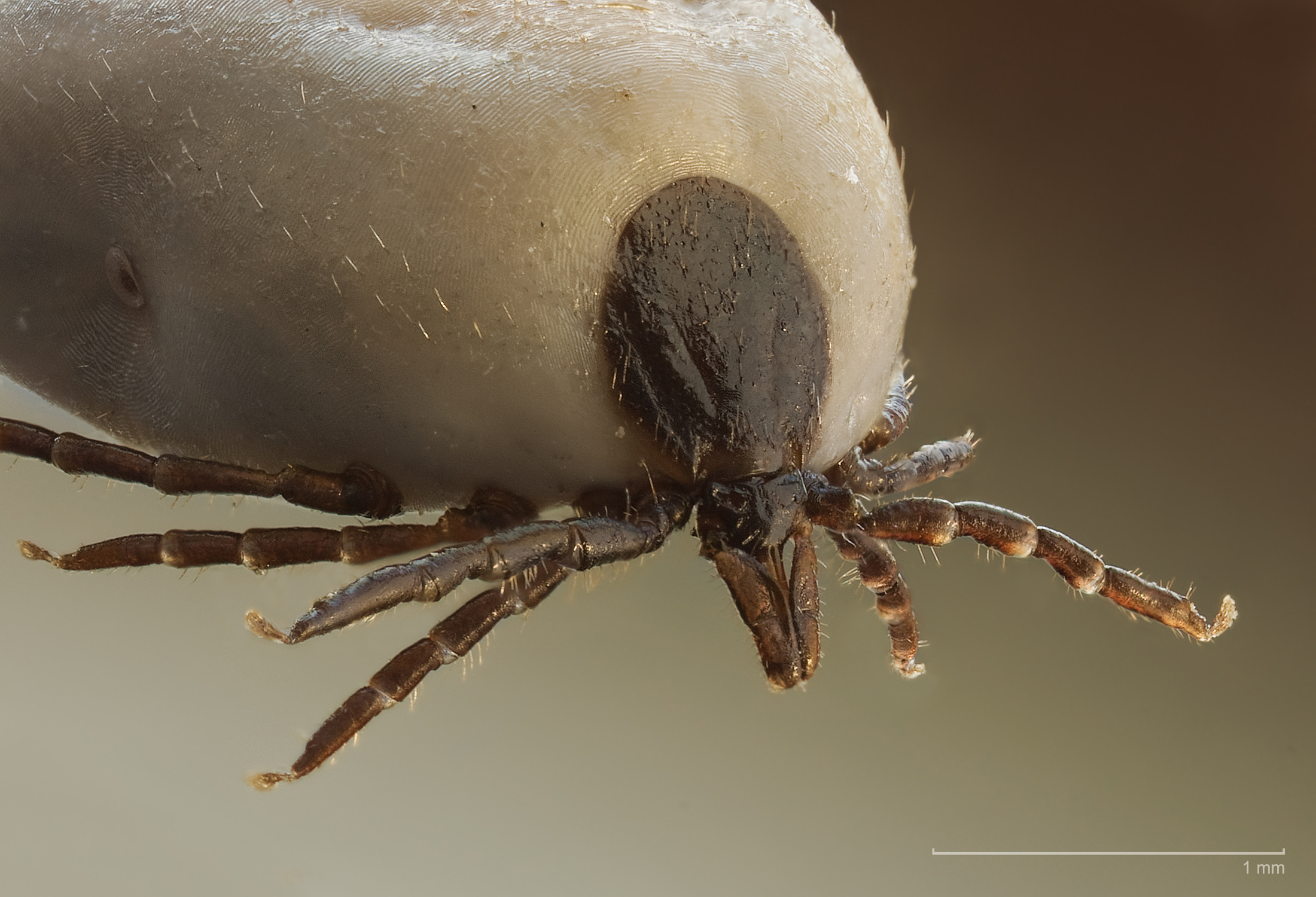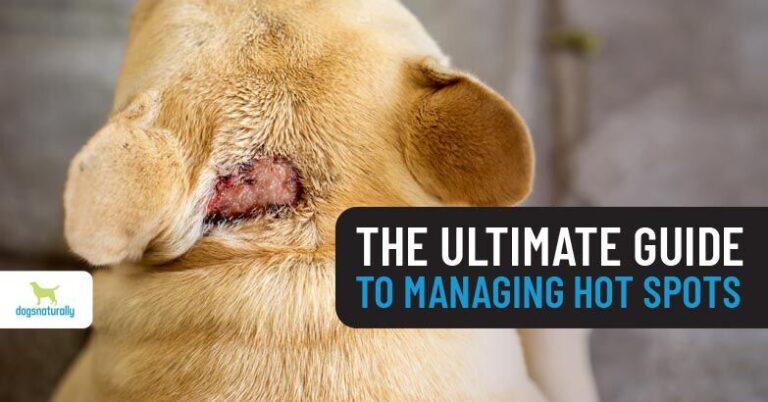Ticks are external parasites that embed themselves into the skin of a dog to feed on its blood, whereas scabs are the result of a damaged or irritated skin area that has become dry and crusty. Ticks are a common problem for dogs, but scabs can also be a sign of various skin conditions such as allergies or infections.
Pet owners need to know the difference between these two conditions so that they can take appropriate measures to treat and prevent them. In this article, we will discuss the symptoms, causes, and treatment options for ticks and scabs on dogs. We will also provide some tips on how to prevent these conditions from occurring in the first place. So, let’s get started!

Credit: en.wikipedia.org
Understanding The Differences Between Ticks And Scabs
Ticks and scabs are both common concerns for dog owners. A tick is a tiny parasite that latches onto a dog’s skin and feeds on its blood. On the other hand, a scab is a crusty area that forms over a healing wound or skin irritation.
Ticks can lead to serious health issues, such as Lyme disease, while scabs are typically a sign of minor irritation or injury. Identifying ticks on your dog involves looking for small, dark spots on their skin, while scabs may be more visible and appear as raised or rough areas. Understanding the differences between ticks and scabs is crucial in providing the right treatment for your furry friend.
The Dangers Of Ticks On Dogs
Ticks are a common parasite among dogs that can lead to serious health issues. The most common types of ticks that affect dogs include deer ticks, brown dog ticks, and American dog ticks. Diseases contracted from ticks include Lyme disease, rocky mountain spotted fever, and ehrlichiosis.
Ticks attach themselves to dogs by burying their heads into the skin. To prevent ticks from attaching to your dog, regularly check and brush their fur, use tick prevention products like collars and sprays, and keep lawns and bushes trimmed.
The Effects Of Scabs On Dogs
Scabs on dogs can have several different causes. They can appear when a dog is excessively scratching or biting at their skin, or they can be the result of a cut or scrape. If left untreated, scabs can cause further damage to a dog’s skin and leave them susceptible to infection. Not only can this be painful for the dog, but it can also put their overall health at risk.
To prevent scabs from forming, it’s important to ensure your dog is on a healthy diet and receives regular check-ups with their veterinarian. It’s also essential to prevent tick and flea infestations, as these can cause a great deal of discomfort for your pet. Regular grooming and keeping your dog’s environment clean can also help ward off scabs.
Tick Vs Scab: The Ultimate Battle On Dogs
Ticks and scabs on dogs are both problematic, but in different ways. Ticks can transmit diseases like Lyme disease, while scabs are usually a symptom of an underlying skin condition. Distinguishing between them can be tricky, as both may appear reddish-brown and be located on the dog’s body.
The correlation between ticks and scabs has not been established, but a dog can have both simultaneously. The best way to deal with either issue is to consult a veterinarian. Don’t try to remove ticks on your own, as improper removal can result in infection or leave the tick’s head embedded in the dog’s skin.
Protecting Your Dog Against Ticks And Scabs
Ticks and scabs are a major problem for dogs and can pose serious health risks. Best practices for tick prevention include using tick-repellent products, checking your dog for ticks regularly, and avoiding tick-infested areas. Scab prevention can be achieved by keeping your dog clean and dry, and monitoring any wounds or injuries for signs of infection.
If your dog has a tick or scab infestation, it is important to seek veterinary care immediately. Treatment may include the removal of ticks or infected scabs, as well as antibiotics to prevent the spread of disease. By taking proactive measures to protect your dog from ticks and scabs, you can help ensure their overall health and well-being.
Frequently Asked Questions For Tick Vs Scab On Dog
What Is A Tick And How Does It Affect My Dog?
Ticks are small blood-sucking parasites commonly found in outdoor environments. They can transmit diseases like Lyme disease, ehrlichiosis, anaplasmosis, rocky mountain spotted fever, and more. Ticks attach themselves to the skin of dogs and can cause discomfort, skin irritation, and other health issues.
What Is A Scab And How Does It Form On A Dog?
A scab is a dry, rough crust that forms on the surface of the skin as a result of a wound, injury, or infection. It is a natural protective barrier that helps to prevent further damage to the skin. Scabs on dogs can be caused by a variety of factors, including fleas, mites, allergies, and skin infections.
How Do I Know If My Dog Has A Tick Or A Scab?
Ticks are visible to the naked eye and look like small black or brown bumps on the skin. They can also feel like small lumps when you pet your dog. Scabs, on the other hand, are dry and crusty and can be red or brown. If in doubt, consult your veterinarian for a proper diagnosis.
What Should I Do If I Find A Tick On My Dog?
If you find a tick on your dog, carefully remove it using tweezers or a tick removal tool. Be sure to grasp the tick as close to the head as possible and gently pull it straight out. Avoid twisting or using excessive force, as this can cause the head to break off and remain in the skin. Disinfect the area and monitor your dog for signs of illness.
Can Scabs On My Dog Be Contagious To Humans Or Other Pets?
Scabs on dogs are not contagious to humans or other pets. However, if the scab is caused by a bacterial or fungal infection, it is possible to spread the infection to other dogs or animals. Be sure to keep your dog’s skin clean and sanitized to prevent the spread of infection.
How Can I Prevent Ticks And Scabs From Affecting My Dog?
To prevent ticks, keep your dog away from wooded areas and tall grasses where ticks are most commonly found. Use tick repellents and regularly check your dog for ticks after outdoor activities. To prevent scabs, keep your dog’s skin clean and free from fleas, mites, and other parasites. Ensure your dog has proper nutrition and a healthy lifestyle.
Conclusion
Ticks and scabs are common yet concerning issues that pet owners face. It is important to identify and remove them promptly to prevent any potential health hazards for both the dog and the pet owner. While ticks are known to transmit Lyme disease, scabs can lead to bacterial infections if left untreated.
Therefore, it is crucial to inspect your pet regularly for ticks and scabs, especially after walking through wooded or grassy areas. There are various ways to remove ticks and treat scabs, such as using tick removers or consulting a vet. As a responsible pet owner, it is important to prioritize the health and well-being of your dog. By staying vigilant and taking preventative measures, you can ensure a happy and healthy life for your furry friend.



